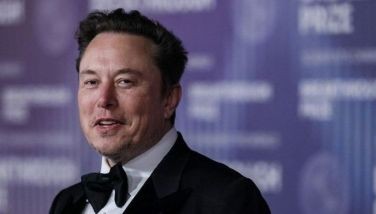Sharp launches 'Super Green Strategy'
Sharp Philippines Corp. (SPC) has joined the green revolution sweeping across the globe by pursuing an intensive environmental conservation policy that cuts across all its businesses and products.
The consumer electronics giant’s so-called Super Green Strategy has five components: Super Green Management, Super Green Technologies, Super Green Products/Devices, Super Green Recycling, and Super Green Factories.
Sharp’s corporate vision is to have energy-creating and energy-saving products that decrease the greenhouse gas emissions in all its factories.
“The campaign aims to bring greater awareness among Filipino consumers about Sharp’s green products,” said Kenji Okunaka, president and general manager of SPC.
From LCD TVs, air purifiers, refrigerators to steam ovens, Sharp is making sure its entire suite of home appliances is designed and manufactured based on eco-friendly and health-promoting technologies.
For example, the company’s new Aquos LCD TV model, the XS1, has an RGB-LED (light emitting diode) backlight system that can reduce power consumption significantly. The XS1 can lower its power requirement by adjusting its screen brightness based on the available light around it.
Okunaka said consumers who switch from the older CRT TV technology to the new LCD TVs like the Aquos 65” model could stand to save up to 200 kilowatts per hour on electric bills in one year. The more common 32” models, he added, could save a household 40 percent in electricity compared to using a CRT unit.
At present, Okunaka said the demand for flat displays is spiraling up due to the availability of more digital broadcasting. Demand has gone up to the 100-million mark this year, an increase of 34 percent over last year, he explained.
Sales of Aquos LCD TVs are also looking up: $8.7 billion worldwide or a quarter of the entire company’s total sales. Yet, Sharp remains to be the No. 3 in the market, after Samsung and Sony, Okunaka admitted, but quickly added that they would try next year to be in the upper rung of the market.
Meanwhile, Okunaka belabored the point that if only the existing 1.2 million units of CRT TVs still in use today are replaced by LCD TVs, the power savings will translate to 100 billion of kilowatt-hours a year — equivalent to the annual output of 14 power stations.
“The 14 power stations’ output is equal to 22 million barrels of oil or roughly 34 million tons of C02. Moving to LCD technology (in the given scale) could save 2.4 billion trees a year or 100,000 square meters of forest,” Okunaka said.
Solar panels
It is just fitting for Sharp, a company that comes from the country called the Land of the Rising Sun, to also invest in and promote heavily the use of solar panels.
Sharp is making available thin-film solar panels as low-cost alternatives to crystal silicon solar cells and a prototype of the solar-powered LED street lamps.
Sharp has nearly 50 years of experience in solar technology, according to Okunaka, and is presently the leading manufacturer of photovoltaic modules in the world, having produced nearly a quarter of all solar cells in use today.
Sharp’s solar modules are employed in a variety of applications and installations, from lighthouses to buildings and from power plants to earth-orbiting satellites. Its latest thin-film solar panels can be mounted on walls and used as skylights.
SPC is carrying out here the global environmental campaign of its parent company, Japan’s Sharp Corp. – Alma Buelva
- Latest





























